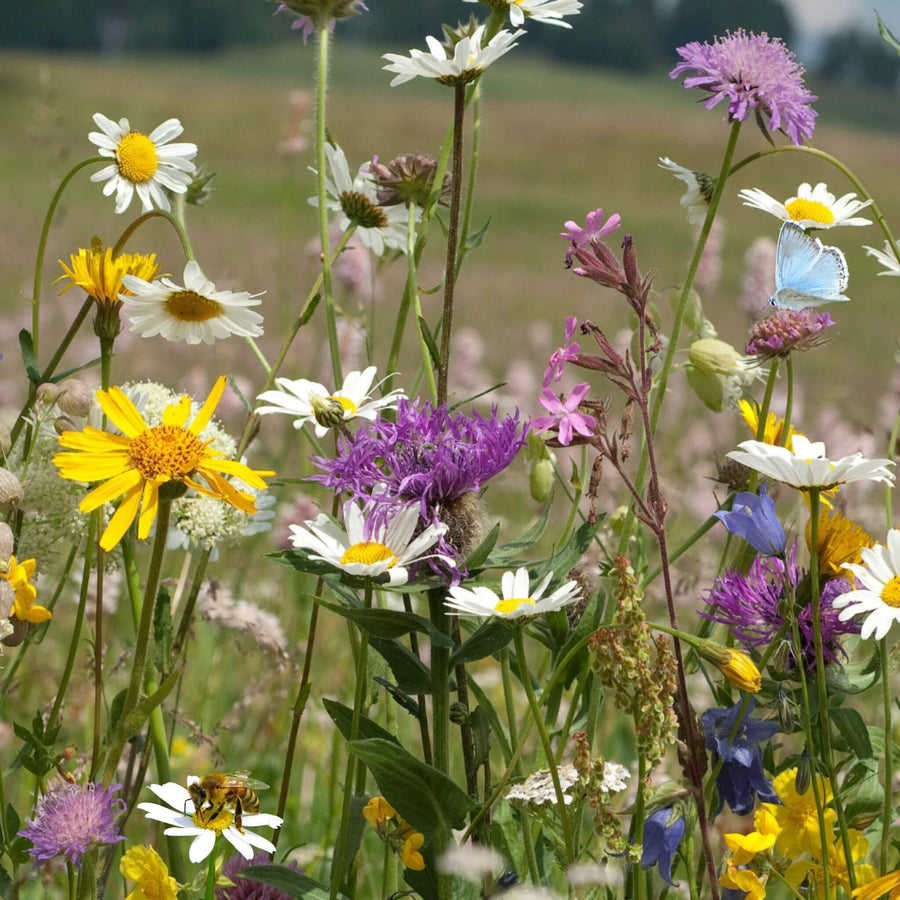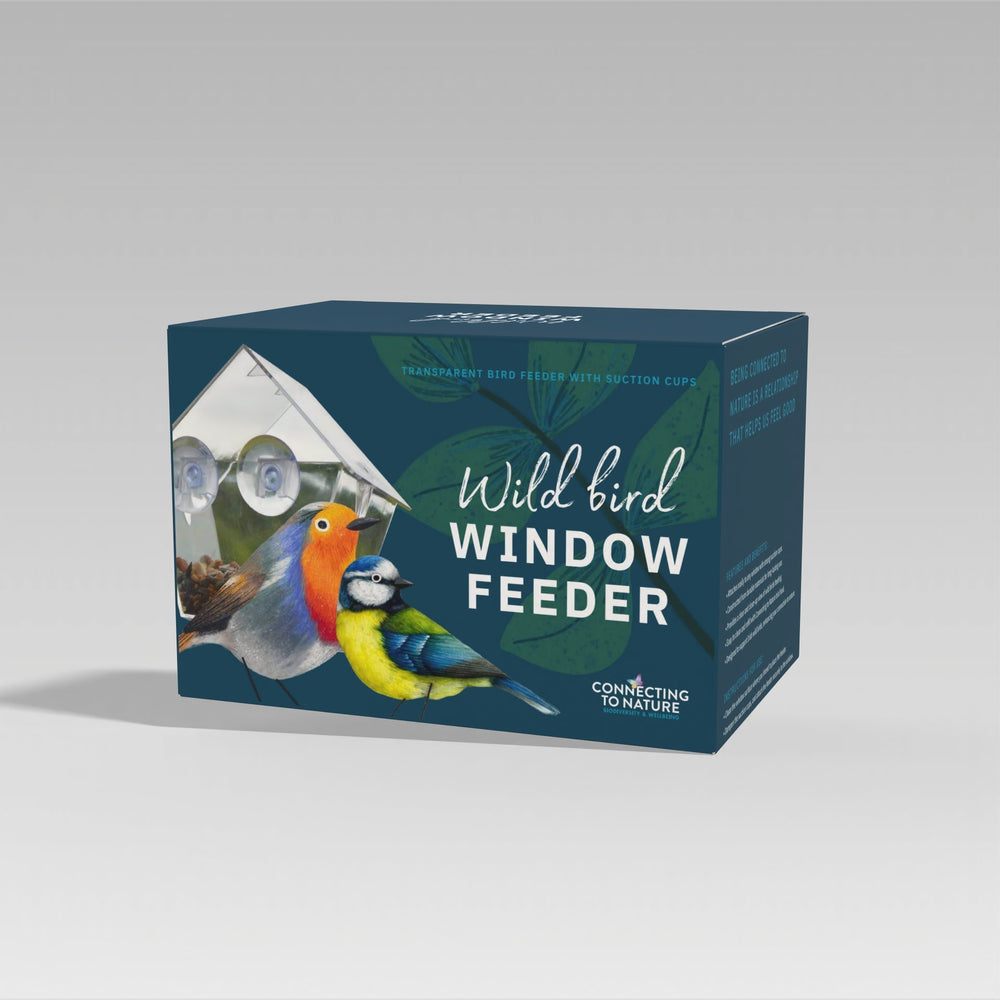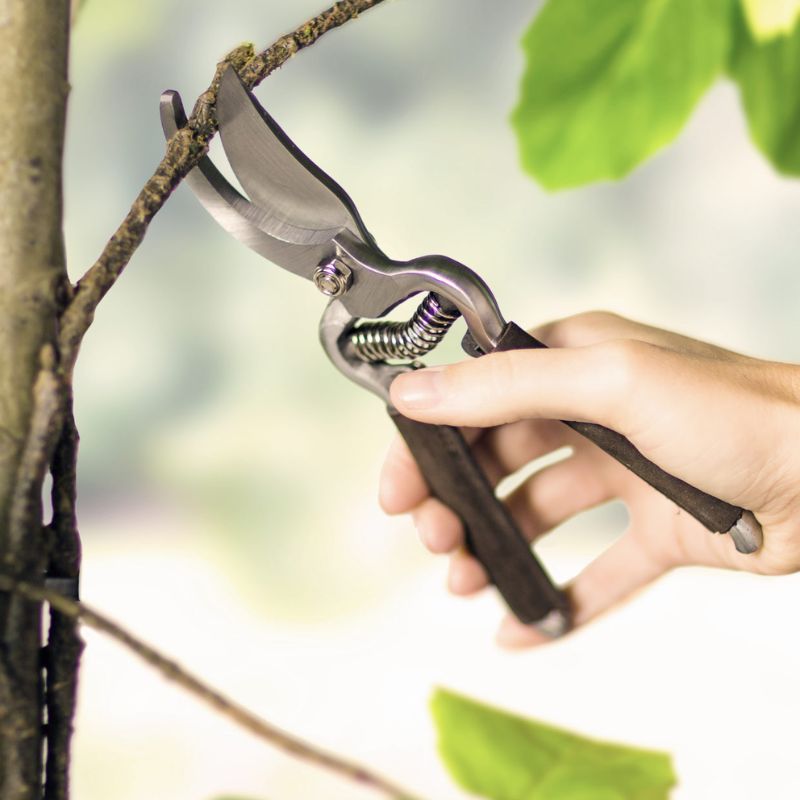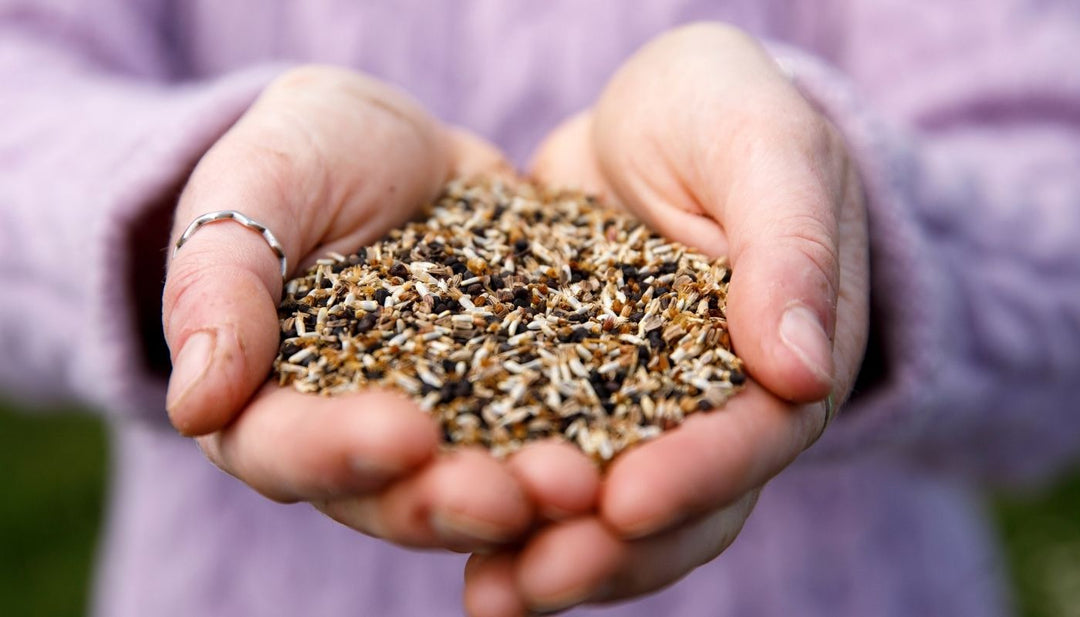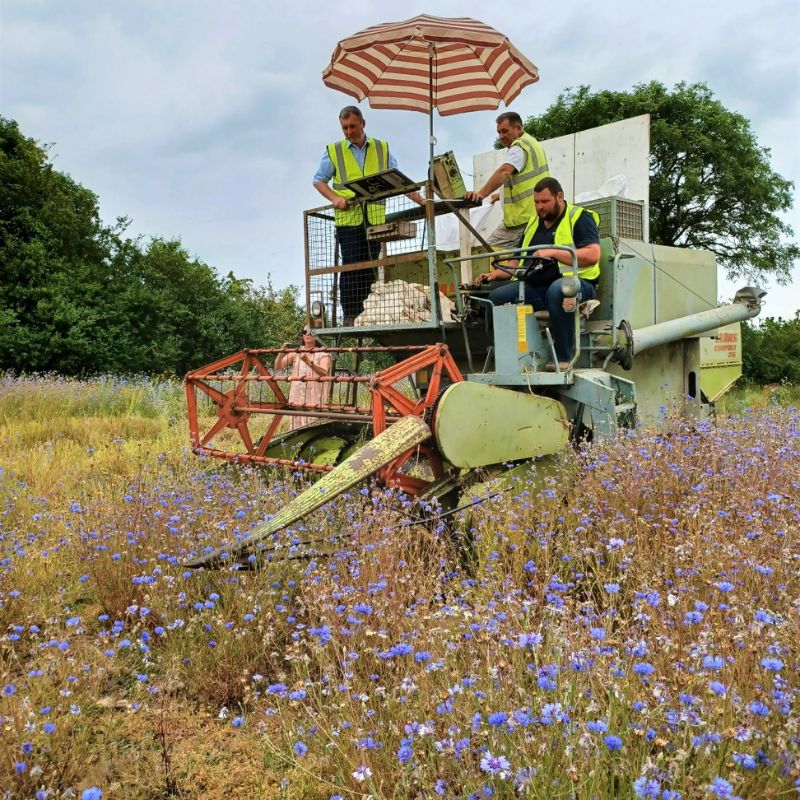5 benefits of sowing wildflowers in Autumn & preparing a stale seed bed
Thinking about sowing wildflower seeds in Autumn? You'll be glad to know that Autumn is the best time to sow wildflower seeds, which we will get into below. But first, understanding the importance of ground preperaiton is key for successfully estbalishing wildflowers.
Preparing a 'stale' seedbed
A stale or false seedbed is a weed management practice. A seedbed is created a number of weeks before sowing, allowing weed seeds just below the soil surface to germinate. The young weeds can then be eradicated before sowing your seed. A well prepared seed bed, free of weeds, grass and other plants can optimise germination, survival rate and will determine the success of your wildflowers.
- Begin the process by removing grass, weeds and any other plants from the area you plan to sow.
- Loosen, or lightly turn the soil over to a depth of about 4 inches.
- Level the soil off with a rake or harrow and compact the soil using a roller or walking all over. This will increase germination.
- When the weeds have germinated the young plants (weeds) should be eradicated.
- Carry out this process 1-3 times depending on the rate of unwanted plants..
Creating a seedbed free of grass, weeds and other plants will ensure you wildflowers don't need to compete for space, moisture and sunlight.
5 benefits of sowing wildflowers in Autumn
- Annual wildflowers sown in autumn can flower up to 5 weeks earlier the following summer and generally produce more flowers than those sown in Spring.
- Root systems are established, meaning they're less prone to drought and require less watering during dry periods.
- Some species such as Yellow Rattle need the cold of winter to germinate, this is called vernalisation. Corn Poppy also germinates better with cold weather.
- There are little to no pests such as slugs, snails and aphids during the Winter, meaning that your flowers will have less damage and stress to contend with.
- Conditions in autumn are generally more ideal with extra moisture in the air to be absorbed by the seed, this also means less watering as nature takes its course.


